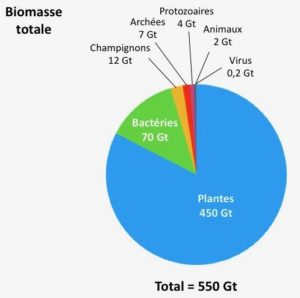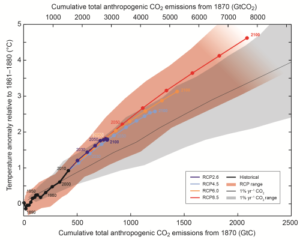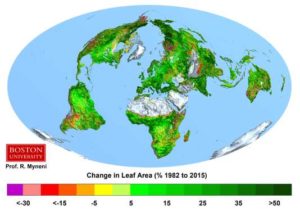by D. Koutsoyiannis, March 14, 2024 in MDPI – (Open Access)
Archives par mot-clé : Carbon
Editorial: Deep Carbon Science
by D. Cardace et al., Nov 12, 2020 in Front.Earth.Sci.
Editorial on the Research Topic
Deep Carbon Science
Our understanding of the slow, deep carbon cycle, key to Earth’s habitability is examined here. Because the carbon cycle links Earth’s reservoirs on nano- to mega-scales, we must integrate geological, physical, chemical, biological, and mathematical methods to understand objects and processes so small and yet so vast. Here, we profile current research in the physical chemistry of carbon in natural and model systems, processes ongoing in the deepest portions of planets, and observations of carbon utilization by the deep biosphere. The relationships between the carbon cycle and planetary habitability are undeniable, forming a conceptual anchor to all work in deep carbon science.
Carbon minerals respond to changing pressures, temperatures, and geochemical conditions. The geologic record preserves evidence of transitional periods at the submicroscopic to regional landscape scales, and demonstrates interplay between carbon-bearing phases and the biosphere. In a new review, Morrison et al. (2020) cast a retrospective look through deep time and call for emerging approaches to clarify the coevolution of the biosphere and geosphere.
Critical to transformations of Earth’s carbon inventory over time are indomitable tectonics – which influence Earth’s surface environment, weathering, metamorphism, magmatism, and volcanism. The slow, deep (endogenous) carbon cycle refines and re-distributes carbon within Earth. In fact, over the 200-million-year-long time scale, important tectonic controls on carbon cycling emerge (Wong et al., 2019). Wong et al. (2019) document the spatiotemporal evolution of fluxes inferred from plate tectonic reconstructions, and highlight CO2 fluxes from continental rift settings post-Pangea. The volcanic flux of CO2 has been successfully reconstructed by direct study of CO2 flux through lakes and adjacent soils (Hughes et al., 2019), an important and often overlooked CO2 valve linking lithosphere, atmosphere, and hydrosphere. From perspectives rooted deeper in the tectonic system, the important roles that serpentinites play in the carbon cycle are evaluated in two senses: 1) serpentinite as a carbon vector to the deep mantle (Merdith et al., 2019), and 2) serpentine mud volcanoes as sites of carbon mobilization through organic acid release (Eickenbusch et al., 2019), in a Mariana Trench case study.
Tiny plankton drive processes in the ocean that capture twice as much carbon as scientists though
by K. Buesseler, May 2020 in TheConversion
The big idea
The ocean plays a major role in the global carbon cycle. The driving force comes from tiny plankton that produce organic carbon through photosynthesis, like plants on land.
When plankton die or are consumed, a set of processes known as the biological carbon pump carries sinking particles of carbon from the surface to the deep ocean in a process known as marine snowfall. Naturalist and writer Rachel Carson called it the “most stupendous snowfall on Earth.”
Some of this carbon is consumed by sea life, and a portion is chemically broken down. Much of it is carried to deep waters, where it can remain for hundreds to thousands of years. If the deep oceans didn’t store so much carbon, the Earth would be even warmer than it is today.
…
What still isn’t known
Our study reveals that scientists need to use using a more systematic approach to defining the ocean’s vertical boundaries for organic carbon production and loss. This finding is timely, because the international oceanographic community is calling for more and better studies of the biological carbon pump and the ocean twilight zone.
The twilight zone could be profoundly affected if nations seek to develop new midwater fisheries, mine the seafloor for minerals or use it as a dumping ground for waste. Scientists are forming a collaborative effort called the Joint Exploration of the Twilight Zone Ocean Network, or JETZON, to set research priorities, promote new technologies and better coordinate twilight zone studies.
To compare these studies, researchers need a common set of metrics. For the biological carbon pump, we need to better understand how big this flow of carbon is, and how efficiently it is transported into deeper water for long-term storage. These processes will affect how Earth responds to rising greenhouse gas emissions and the warming they cause.
Storage wars
by Charles the moderator, January 5, 2019 in WUWT
UC Santa Barbara researcher conducts first-ever global-scale evaluation of the role of soil minerals in carbon storage
University of California – Santa Barbara
One answer to our greenhouse gas challenges may be right under our feet: Soil scientists Oliver Chadwick of UC Santa Barbara and Marc Kramer of Washington State University have found that minerals in soil can hold on to a significant amount of carbon pulled from the atmosphere. It’s a mechanism that could potentially be exploited as the world tries to shift its carbon economy.
“We’ve known for quite a long time that the carbon stored on minerals is the carbon that sticks around for a long time,” said Chadwick, co-author of the paper, “Climate-driven thresholds in reactive mineral retention of soil carbon at the global scale,” published in the journal Nature Climate Change. How much carbon the soil can take and how much it can keep, he said, are dependent on factors including temperature and moisture.
…
Global-scale evaluation of role of soil minerals in carbon storage
by U. of California – Santa Barbara, January 2, 2019 in ScienceDaily
“We’ve known for quite a long time that the carbon stored on minerals is the carbon that sticks around for a long time,” said Chadwick, co-author of the paper, “Climate-driven thresholds in reactive mineral retention of soil carbon at the global scale,” published in the journal Nature Climate Change. How much carbon the soil can take and how much it can keep, he said, are dependent on factors including temperature and moisture.
“When plants photosynthesize, they draw carbon out of the atmosphere, then they die and their organic matter is incorporated in the soil,” Chadwick explained. “Bacteria decompose that organic matter, releasing carbon that can either go right back into the atmosphere as carbon dioxide or it can get held on the surface of soil minerals.”
..
La biomasse globale : de larges incertitudes, également sur le cycle du carbone!
by Prof. Paul Berth, 14 décembre 2018 in ScienceClimatEnergie
Dans un article récent de juin 2018[1], le biologiste Yinon Bar-On et ses collaborateurs ont estimé la biomasse totale de la biosphère actuelle (Bar-On et al. 2018). Pour cela, ils ont simplement estimé les nombres de bactéries, protozoaires, plantes et animaux dans tous les écosystèmes de la planète. En connaissant le poids moyen de chaque organisme, les auteurs ont ensuite réalisé des sommes. Ils arrivent au chiffre final de 550 gigatonnes (Gt) de carbone. Ce chiffre est-il élevé ? Avec quoi peut-on le comparer? Est-il précis ? Quels sont les organismes les plus importants dans la biosphère ? Quelles sont les conséquences pour le cycle du carbone, et donc pour la concentration de CO2 atmosphérique ? Voici toute une série de questions que l’on doit se poser. Nous allons voir que les résultats de Yinon Bar-On sont assez étonnants et qu’ils induisent des conséquences majeures pour le cycle du carbone dans la biosphère.
…

Figure 1. Biomasse totale de la biosphère, en gigatonnes (Gt). Bar-On et al. (2018)
…
Climate sensitivity to cumulative carbon emissions
by Judith Curry, December 11, 2018 in ClimateEtc.
By Nic Lewis
An observational estimate of transient (multidecadal) warming relative to cumulative CO2 emissions is little over half that per IPCC AR5 projections.
AR5 claims that CO2-caused warming would be undiminished for 1000 years after emissions cease, but observations indicate that it would halve.
Marché européen du carbone : stop ou encore
by Jean-Pierre Schaeken, 7 décembre 2018 in ScienceClimatEnergie
Le système d’échange de quotas d’émission de l’UE,connu sous l’acronyme SEQE-EU ou en anglais EU ETS, est instrument utilisé pour réduire les émissions de Gaz à Effet de Serre (GES) ou de CO2 pour faire court. Il repose sur un principe de plafonnement et d’échange des droits d’émission. Il a été adopté par la Commission Environnement du Parlement européen, le 13 octobre 2003.
…
Pulses of sinking carbon reaching the deep sea are not captured in global climate models
by Monterey Bay Aquarium Research Institute, December 3, 2018 in ScienceDaily
More than two miles below the ocean’s surface, microbes, worms, fishes, and other creatures great and small thrive. They rely on the transport of dead and decaying matter from the surface (marine snow) for food at these dark depths.
Up near the sea surface, carbon dioxide from the atmosphere is incorporated in the bodies of microscopic algae and the animals that eat them. When they die, these organisms sink to the depths, carrying carbon with them.
This supply of carbon to the deep sea isn’t steady. At times, months’ to years’ worth of marine snow falls to the abyss during very short “pulse” events.
In a new study published in the Proceedings of the National Academy of Sciences (PNAS), MBARI scientists and their collaborators show that there has been an increase in pulse events off the coast of California. They also show that, although such episodes are very important to the carbon cycle, they are not well represented in global climate models.
…
Cycle du carbone, l’éclairage de trois nouvelles publications
by Uzbek, 11 septembre 2018 in Climat,Environnemen,Energie
Trois nouvelle études publiées en août 2018 apportent un éclairage nouveau sur le cycle du carbone. La première, publiée dans la revue Nature [1] montre que le taux de croissance du CO2 dans l’atmosphère est très sensible aux changements observés dans le stockage de l’eau terrestre. Les deux autres publiées respectivement dans Nature Geoscience [2] et dans Nature [3] montrent une tendance à l’augmentation du puits de carbone terrestre grâce notamment aux modifications de l’usage des sols sous l’influence des activités humaines.
…
End of the Little Ice Age in the Alps forced by industrial black carbon
by Thomas H. Painter et al., September 17, 2018 in PNAS
The end of the Little Ice Age in the European Alps has long been a paradox to glaciology and climatology. Glaciers in the Alps began to retreat abruptly in the mid-19th century, but reconstructions of temperature and precipitation indicate that glaciers should have instead advanced into the 20th century. We observe that industrial black carbon in snow began to increase markedly in the mid-19th century and show with simulations that the associated increases in absorbed sunlight by black carbon in snow and snowmelt were of sufficient magnitude to cause this scale of glacier retreat. This hypothesis offers a physically based explanation for the glacier retreat that maintains consistency with the temperature and precipitation reconstructions.
…
Evaluating the contribution of black carbon to climate change
by Nagoya University, September 11, 2018 in ScienceDaily
Black carbon refers to tiny carbon particles that form during incomplete combustion of carbon-based fuels. Black carbon particles absorb sunlight, so they are considered to contribute to global warming. However, the contribution of black carbon to the heating of the Earth’s atmosphere is currently uncertain. Models that can accurately assess the warming effect of black carbon on our atmosphere are needed so that we can understand the contribution of these tiny carbon particles to climate change. The mixing state of black carbon particles and their particle size strongly influence their ability to absorb sunlight, but current models have large uncertainties associated with both particle size and mixing state.
…
Soil carbon debt of 12,000 years of human land use
by J. Sanderman et al., July 2017 in PNAS
Human appropriation of land for agriculture has greatly altered the terrestrial carbon balance, creating a large but uncertain car- bon debt in soils. Estimating the size and spatial distribution of soil organic carbon (SOC) loss due to land use and land cover change has been difficult but is a critical step in understand- ing whether SOC sequestration can be an effective climate mitigation strategy.
See also here


